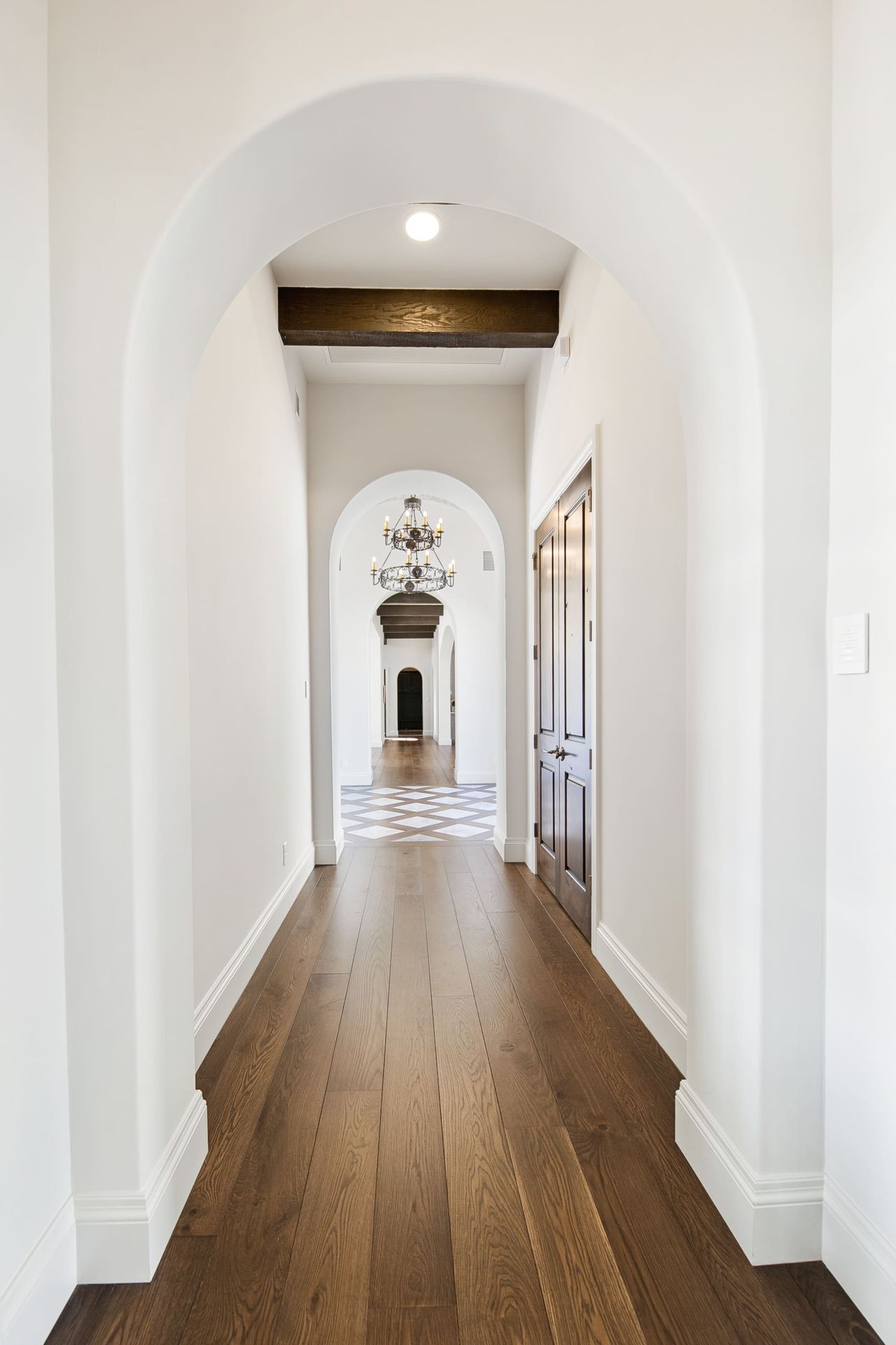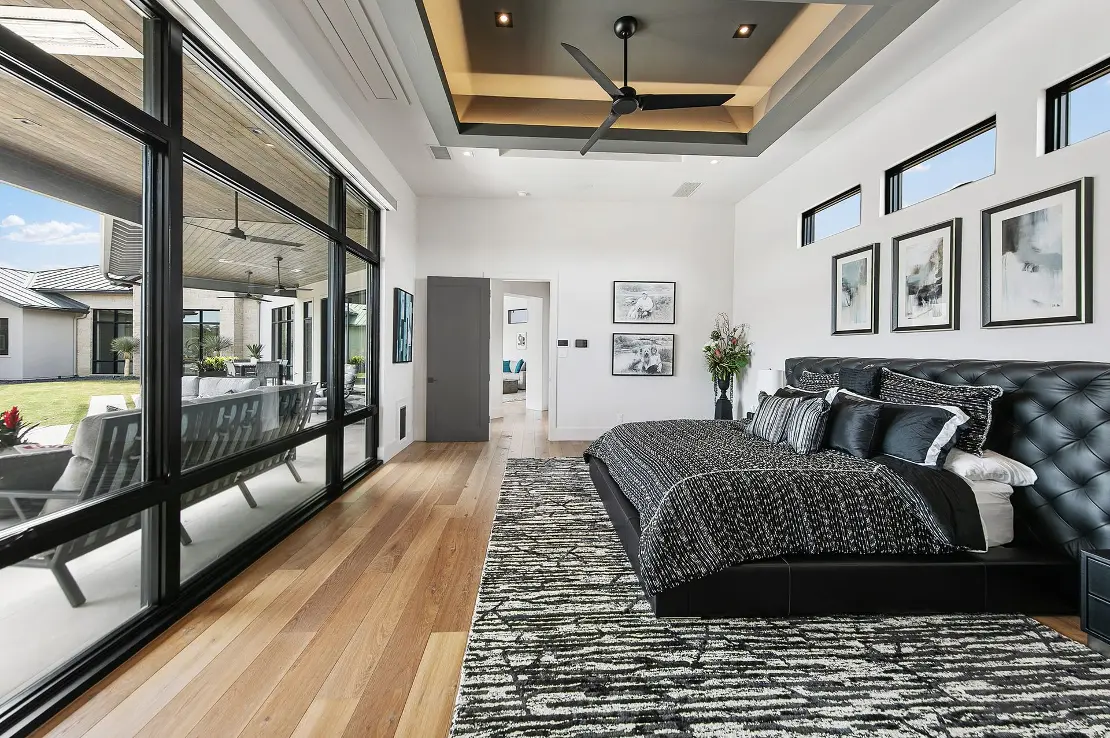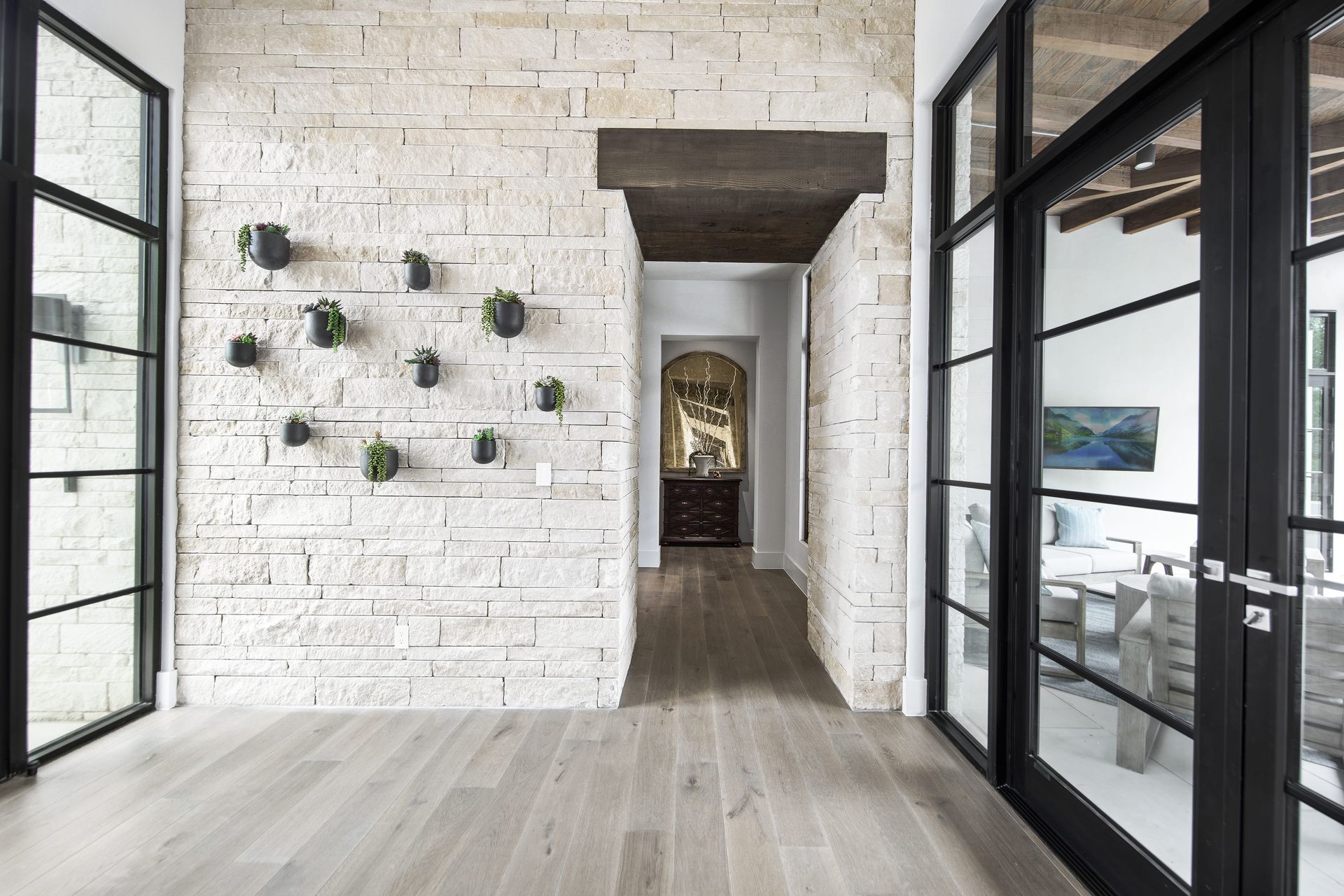Wood flooring has been around since the 15th Century or even earlier, when abundant supplies of lumber led early colonial settlers to construct their homes from this versatile material.
Today, wood flooring retains many of the same practical benefits that made it attractive to those people – but as architecture, lifestyles and tastes have become more and more refined, so have our preferences when it comes to the specifications of wood flooring.
Without doubt, the pinnacle of wood flooring design right now is a trend towards longer and often wider floorboards. These oversized boards represent the crème de la crème of America’s lumber stocks, making them much harder to come by and therefore much more desirable. But aside from the scarcity factor, XL flooring also brings some key design and aesthetic benefits that are appealing to designers and architects for a variety of reasons. Let’s take a closer look.

What makes longer and wider floorboards unusual?
Longer and wider wood flooring is regarded as elite because it’s much harder to come by, and this is often reflected in the price. This is because only a small percentage of all lumber is suitable for manufacturing into extra long boards. Extra long flooring comes from very mature trees, and in order to make the grade for flooring (especially clear and select grades) their wood needs to be free from imperfections like large knots that have to be cut out, resulting in shorter and narrower plank lengths.
What are the design benefits of longer and wider flooring?
Longer and wider floorboards have some key design benefits that make them a smart choice for design professionals, especially when working on contemporary homes.
Harmony of scale
Contemporary architecture typically features open-concept design – expansive spaces with large floor areas and high ceilings, often flooded with light from tall windows and glass walls. These types of spaces demand a careful approach to the scale of other design elements in the room, including furniture, artwork – and flooring. Filling a large space with lots of small elements can result in it feeling unbalanced, busy and ill-thought-out. Simply put, big spaces demand big flooring that contributes to the overall feeling of spaciousness, serenity and confident design.

Streamlined aesthetics
Another key benefit of longer and wider flooring is that each individual board covers more surface area, which ultimately means fewer joins in the floor. This is important in large spaces for reasons of visual streamlining – as mentioned above, a smaller format floor with lots of joins can look busy when applied over a large surface area.
The sleek and streamlined aesthetic of longer and wider floorboards can also be deployed to great effect in smaller spaces, helping to draw the eye outwards to the perimeter of the room and giving the illusion of space, while reducing visual distractions.
Showcasing nature
A key design benefit of longer and wider wood flooring is its ability to truly showcase the natural beauty of the wood itself. While in shorter flooring lengths the natural grain pattern is often truncated, longer lengths allow the sweeping lines and swirls of the wood grain to be fully expressed across the surface of the floor. Fewer joins mean there is little to distract the eye from the beauty of a timeless material designed by Mother Nature herself.
What are the practical benefits of longer and wider wood flooring?
As well as the aesthetic appeal of longer and wider wood flooring, a key practical benefit is the speed and efficiency of installation. Unlike shorter format floors with lots of joining and cutting, or complicated patterns such as herringbone, longer and wider floors (most commonly laid in a random length pattern) are typically faster to lay.

Are there any drawbacks to longer and wider wood floors?
When it comes to solid wood floors, the longer and wider the plank, the greater the potential for expansion and contraction due to environmental factors, especially humidity.
To avoid these issues, proper acclimatisation of the boards before installation is crucial. Wider planks may require the use of spacers to allow for the natural movement of the wood without causing issues like cupping or gapping. The majority of problems arising with wood floors occur because of poor quality installation, which is why we always recommend using a NWFA approved installer for your WoodCo floor.
It’s also important to note that some wood species are more stable than others - denser hardwoods like oak and hickory are more prone to movement compared to softer woods like pine. More stable again is engineered wood flooring, which has a plywood base that makes it more resistant to problems associated with expansion and contraction.
Versatile & stunning
At WoodCo, we specialize in longer and wider wood floors, crafted from premium quality lumber, sourced sustainably in the US and Western Europe. Many of our in-stock solid and engineered wood floors are available off the shelf in longer lengths, but we also have the capacity to custom source a particular grade or style of wood floor in longer lengths for specific projects. Contact our expert team today to discuss your requirements.